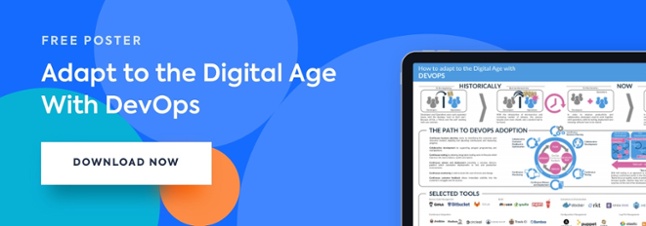
By now we know that Enterprise Architect (EA) roles are imperative to a forward-thinking enterprise. EAs often find a challenge with applicable ideas to organize their enterprise architecture. Below are 7 useful ideas to organize your Enterprise Architecture:
1. Clearly define the role of EA in your enterprise
The EA role is inherently complex by nature, looks different from company to company, and is often confusing for the rest of the organization to pinpoint their goals. It is imperative to clearly establish the role and accountability points for the EA team based on company culture, funding levels, the role information technology plays in the enterprise, and many other factors.
After plainly defining the EA role, delegate which EA personnel has final say on major decisions so teams will have an accessible person to contact when presented with an issue. Defining the role and expectations of your EA team will establish transparency, and improve the EA department’s perception as a problem solver rather than a hindrance to business growth.
2. Appoint an Enterprise Architecture (EA) team
First, if your company doesn’t have a well-defined EA team - create one. Choose between appointing one person, or formulating a dynamic EA team that possesses profound IT knowledge and know-how to make finalized architectural decisions.
AMAG contacted LeanIX with pressing architectural issues. The company reported misunderstandings of concepts, poor communication, transparency issues and money wasted due to IT redundancies. AMAG is the largest car company in Switzerland with over 5600 personnel, handling 85,000 cars imported annually, leasings over 100,000 contracts and administering over 120,000 different spare parts at any given time. Even with all of the staff on hand, AMAG had no clearcut Enterprise Architect.
AMAG decided to appoint Andreas Puke as Enterprise Architect, who in turn  reported directly to the CIO. Puke’s first order of business as an EA was to establish enterprise-wide understanding of SAP terms. The second important task was to carry out semi-automatic integration with the help of file imports. Lastly, the feedback of stakeholders was evaluated, before a fully automated integration was established.
reported directly to the CIO. Puke’s first order of business as an EA was to establish enterprise-wide understanding of SAP terms. The second important task was to carry out semi-automatic integration with the help of file imports. Lastly, the feedback of stakeholders was evaluated, before a fully automated integration was established.
Appointing a clear EA to spearhead organizational initiatives created transparency and immediately helped AMAG to realize several quick wins. On the basis of streamlined communication and completed information, AMAG has been able to start the move to next generation SAP landscape and the development of innovative IT services on top of it. AMAG immensely benefited from clearly appointing an EA.
3. Select forward-thinking EA leaders
It isn’t enough that EA leaders have experience in business strategy, or know a few IT terms. Unproductive EAs are notorious for amassing silos of scarcely useful data that lacked real applicable business references and consequently proposing abstract directives from the secluded comfort of their ivory towers.
Choose an EA that makes data-driven decisions, is agile-minded and forward-thinking, and is keenly focused on producing quick results. Your star EA doesn’t have to be a coding expert - but should have a basic knowledge of the entire IT landscape. Valuable EAs are tech savvy, problem-solvers, hyper-connected with IT teams, and have a personal interest to stay abreast of market trends.
4. Make the change to a microservices architecture
Microservices architecture is a way of breaking large software projects into smaller, freestanding, independently deployable, loosely coupled, scalable modules. Individual modules are responsible for highly defined and discrete tasks and communicate with other modules through simple, universally accessible APIs.
According to web server vendor NGINX, 68% of organizations are using or investigating microservices. And a separate study by Evans Data Corporation found that 90% of cloud developers are either already using microservices in production or plan to do so this year.
Over time, monolithic architectures develops very complex structures that make it increasingly difficult to perform changes quickly whereas microservices allow for rapid changes and short release times along with high scalability and autonomous teams.
5. Use an EA management tool
Managing complexity in the IT landscape and aligning it with business capabilities in EA is a challenging task. In order to align IT strategy with business goals, capabilities, and processes consider using an EA management tool.
Increase efficiency, and effectiveness and be able to manage the increased number of applications, processes, and projects running simultaneously. Managing just 5 applications could result in hundreds of new interfaces, steps, and processes to deal with. It is imperative to deploy one consistent operating tool to visualize the entire IT landscape. Discover LeanIX’s Enterprise Architecture management tool.
6. Take your company to the next level with DevOps
DevOps is a software development and delivery process that emphasizes communication and collaboration between product management, software development, and operations professionals. The DevOps approach has many benefits - shorter development cycles, increased deployment frequency and faster times to market. In today's world, enterprises must stay abreast of customer needs, beat competitors to market, and constantly change direction when necessary.
7. Consider a business framework based on connectivity and agility
Ineffective EAs are often hard to reach, send demands from their desks, and rarely stick around to see the implementation of the new directives. Effective EAs not only propose and investigate possible resolutions but remain helpful and accessible, offering supplemental support until a solution is reached. Being a connected EA will make you immensely more valuable to your company.
What will also be valuable for your company is adapting to a lean and agile data model. Focusing on a lean data model that incorporates business capabilities, data models or and many other components. A simple, lean, and structured overview of the entire architecture will help your company succeed.

![Enterprise Architecture Success Kit [White Paper]: Everything you need for quick time-to-value and long-term success through EA. »](https://no-cache.hubspot.com/cta/default/2570476/17fd5630-69af-4c4c-82f1-8e88da49fc47.png)






